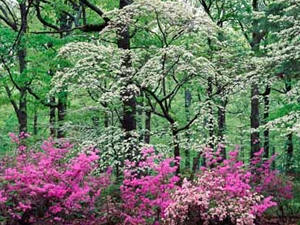Fertilizing – Strengthening Your Trees from the Bottom Up
 Why Fertilize?
Why Fertilize?
The primary reason for fertilizing trees and shrubs in the landscape is to maintain reasonable vigor so that plants will be able to resist environmental stresses and pests. Trees and shrubs in the landscape may require little or no supplemental fertilization if plants are sited correctly, fallen leaves are shredded in place, nutrient-containing mulch is used or surrounding turf areas are fertilized regularly. Fertilizing is not a panacea; don’t expect it to solve problems associated with careless planting, improper watering, poor drainage or unhealthy plant material.
Is Fertilization Needed?
Signs of low nutrition are poor tree growth, pale green or yellow leaves, mottled patterns between veins, ends of branches containing dead twigs, stunted leaves or early loss of leaves.
Check tree growth by measuring down from the tip of the twig to the first ring of bud scale scars; this is the current season’s growth. The previous year’s growth extends between the first and second bud scale scars. Twig growth on most young trees should be 9-12 inches or more per year. Large, mature trees may grow only 4-6 inches per year.
Past weather conditions may be contributing to tree problems appearing today. Drought, heavy rain flooding the soil, record cold in winter and cold snaps all affect trees for some time to come. This stress may then make trees susceptible to insect borers, canker diseases and root rot diseases.
The majority of the small, absorbing roots of a tree are concentrated in the upper 12 inches of soil. Only a small percentage of the tree’s roots are deeper, anchorage roots. When the soil surface dries out, as happens during a drought, the fine surface roots become less absorbent and eventually die. Fertilizing will help stimulate growth of the tree’s root system, enabling the tree to take up more of the nutrients and water that it needs.
Keystone’s Fertilization Program
Keystone uses a soil injection method to inject a slow-release fertilizer into the affected plant’s root system. This fertilizer will breakdown over time to continuously provide essential nutrients to the tree or shrub. Fertilization can be tailored to your particular soil as determined by our soil testing results or by the requirements of the plant species.

